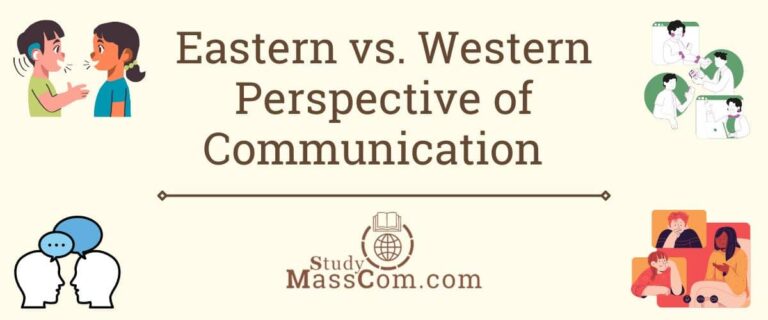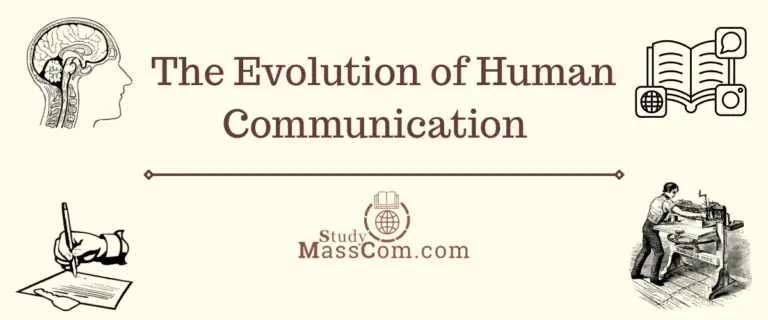Development Communication in Journalism: Bridging Gaps for Positive Change
Introduction
Development communication is a vital aspect of journalism that focuses on the dissemination of information with the goal of promoting social and economic progress. It goes beyond traditional news reporting and aims to empower communities, raise awareness, and foster positive change. This blog will explore the significance of development communication in journalism and how it can bridge gaps and contribute to sustainable development.

Understanding Development Communication
Development communication involves the use of media platforms to address societal issues, foster dialogue, and advocate for inclusive development. Its primary objective is to empower marginalized communities, amplify their voices, and promote their participation in decision-making processes. Unlike conventional journalism, which primarily focuses on reporting events, development communication takes a more proactive role in facilitating social change.
Role of Development Communication
Promoting Awareness and Empowerment
One of the key roles of development communication in journalism is to promote awareness about critical social and developmental issues. By shedding light on topics such as poverty, inequality, health, education, and environmental sustainability, journalists can create public awareness and mobilize support for change. Through in-depth reporting, investigative journalism, and compelling storytelling, development communication can inspire action and empower individuals and communities to seek solutions.
Giving a Voice to Marginalized Communities
Development communication serves as a platform for amplifying the voices of marginalized communities. Journalists play a crucial role in highlighting the struggles, aspirations, and achievements of these communities. By giving them a voice, journalists can bring attention to their needs, challenges, and successes, ultimately driving inclusive development. Through storytelling, human-interest features, and community engagement, development communication empowers marginalized groups and encourages societal empathy and understanding.
Facilitating Dialogue and Collaboration
Development communication fosters dialogue and collaboration between various stakeholders, including governments, NGOs, local communities, and the private sector. By acting as a bridge between these entities, journalists can facilitate constructive discussions, encourage partnerships, and advocate for sustainable solutions. Development communication also creates platforms for citizens to engage in dialogue with policymakers, fostering transparency, accountability, and participatory decision-making.
Measuring Impact and Driving Sustainable Development
An essential aspect of development communication is measuring its impact and ensuring tangible outcomes. Journalists must go beyond mere reporting and assess the real-world changes brought about by their communication efforts. By tracking the effectiveness of development initiatives, journalists can hold stakeholders accountable and drive continuous improvement toward sustainable development goals.
Explore the Magic Multiplier approach in development communication.
Challenges and Ethical Considerations
While development communication holds immense potential, it also faces challenges and ethical considerations. Journalists must navigate sensitive cultural contexts, ensure accuracy and balance in reporting, and avoid reinforcing stereotypes or biases. Moreover, sustainability and long-term impact must be prioritized over sensationalism and short-term gains.
Types of Development Communication in Journalism
Advocacy Journalism
Advocacy journalism involves actively promoting specific social or developmental causes. Journalists in this field use their platforms to advocate for policy changes, raise awareness, and influence public opinion. They often collaborate with advocacy groups, NGOs, and grassroots organizations to amplify their voices and push for positive change.
Solutions Journalism
Solutions journalism focuses on reporting not only the problems but also potential solutions to social issues. Journalists in this field seek out innovative approaches, successful initiatives, and best practices that address developmental challenges. By highlighting these solutions, they inspire readers to take action and encourage policymakers to adopt effective strategies.
Participatory Journalism
Participatory journalism involves engaging communities directly in the news production process. Journalists collaborate with citizens, community organizations, and local stakeholders to co-create stories, gather information, and amplify diverse voices. This approach promotes inclusivity, empowers communities, and ensures that news reflects the perspectives and needs of the people it serves.
Development Feature Writing
Development feature writing involves in-depth reporting on specific developmental issues. Journalists use narrative storytelling techniques to explore the human impact of social challenges and initiatives. Through personal narratives, case studies, and human-interest stories, they bring attention to the complex realities faced by individuals and communities, fostering empathy and understanding.
Data Journalism
Data journalism involves the use of data analysis and visualization techniques to uncover and explain developmental trends, challenges, and progress. Journalists in this field collect and analyze data from various sources, such as government reports, surveys, and research studies, to provide evidence-based reporting on social issues. Data journalism adds depth and context to stories, enabling readers to understand the underlying factors contributing to development challenges.
Multimedia Journalism
Multimedia journalism incorporates different forms of media, including text, images, videos, and interactive elements, to engage and inform audiences. Journalists leverage multimedia platforms to tell compelling stories, visually showcase developmental issues, and create impactful narratives. This type of journalism enhances audience engagement and facilitates a better understanding of complex topics.
Development Communication Campaigns
Development communication campaigns involve strategic and targeted communication efforts to address specific developmental issues. Journalists collaborate with organizations, institutions, and communities to design and execute campaigns that raise awareness, change attitudes and behaviors, and mobilize support for social causes. These campaigns utilize various media channels, such as social media, radio, television, and print, to reach a wide audience.
International Development Journalism
International development journalism focuses on reporting on global issues and development efforts across countries and regions. Journalists in this field cover topics such as international aid, sustainable development goals, cross-border collaborations, and global inequalities. By providing a broader perspective, international development journalism fosters understanding and encourages international cooperation for positive change.
Scope of Development Communication in Journalism
The scope of development communication in journalism is vast and encompasses a wide range of topics, issues, and approaches. It extends beyond traditional news reporting and involves various forms of communication, including written articles, multimedia presentations, campaigns, and collaborations. The scope of development communication in journalism includes:
Social and Economic Development
Journalists engaged in development communication cover a broad spectrum of social and economic issues. This includes topics such as poverty alleviation, education, healthcare, gender equality, human rights, sustainable livelihoods, access to clean water and sanitation, infrastructure development, and more. They delve into the complexities of these issues, providing in-depth analysis and highlighting potential solutions.
Marginalized Communities and Inclusion
Development communication in journalism focuses on amplifying the voices and addressing the needs of marginalized communities. It sheds light on the challenges faced by disadvantaged groups, including women, children, ethnic minorities, indigenous populations, people with disabilities, and those living in poverty or remote areas. Journalists strive to ensure that their reporting promotes inclusivity, equity, and social justice.
Sustainable Development and Environmental Issues
Journalists play a crucial role in reporting on environmental sustainability and the impact of human activities on ecosystems. They cover topics such as climate change, biodiversity loss, deforestation, pollution, renewable energy, and conservation efforts. Development communication in journalism emphasizes the interconnectedness between human development and the environment, highlighting the need for sustainable practices and policies.
Local and Global Perspectives
The scope of development communication extends to both local and global contexts. Journalists report on development issues specific to their regions, shedding light on local initiatives, challenges, and success stories. They also engage with global development agendas, including the United Nations Sustainable Development Goals (SDGs), international aid, cross-border collaborations, and global inequalities. This scope ensures a comprehensive understanding of development challenges at various levels.
Collaboration and Stakeholder Engagement
Development communication in journalism involves collaboration and engagement with various stakeholders, including governments, NGOs, community-based organizations, private sector entities, and individuals. Journalists act as facilitators, bringing together different perspectives, fostering dialogue, and encouraging partnerships for effective and sustainable development. They create platforms for communities and stakeholders to actively participate in the development process.
Ethical Considerations and Impact Assessment
Within the scope of development communication, journalists uphold ethical standards, including accuracy, fairness, and sensitivity. They navigate cultural contexts and avoid reinforcing stereotypes or biases. Additionally, journalists engaged in development communication strive to assess the impact of their reporting and communication efforts. This includes evaluating the effectiveness of campaigns, initiatives, and policy changes to ensure they contribute to sustainable development.
Examples of Development Communication in Journalism
“The Girl Effect” Campaign
“The Girl Effect” is a development communication campaign launched by the Nike Foundation and other partners. It aims to raise awareness about the importance of investing in girls’ education, health, and empowerment. Through multimedia storytelling, including videos, articles, and social media campaigns, the initiative highlights the transformative impact of supporting girls in developing countries, inspiring action and advocacy.
Solutions Journalism: “Housing First” Approach
Journalists practicing solutions journalism have reported on the “Housing First” approach to addressing homelessness. Instead of traditional shelters, this approach provides permanent housing for individuals experiencing homelessness, coupled with support services. By showcasing successful implementations of the Housing First model in various communities, journalists have highlighted a potential solution to the complex issue of homelessness.
Participatory Journalism: Citizen Reporting in Conflict Zones
In conflict zones, journalists often collaborate with citizen journalists and local communities to report on the ground realities. These collaborations enable the voices of affected communities to be heard, providing firsthand accounts of the challenges they face. By incorporating these perspectives into their reporting, journalists contribute to a more comprehensive understanding of the impact of conflict and aid in mobilizing support for affected populations.
Development Feature Writing: Maternal Healthcare in Developing Countries
Journalists have produced in-depth features on the state of maternal healthcare in developing countries, shedding light on the challenges faced by pregnant women and the initiatives aimed at improving their access to quality healthcare. These features often share the personal stories of mothers and highlight the importance of addressing maternal health as a critical component of overall development.
Data Journalism: Visualizing Global Inequalities
Data journalists have created interactive visualizations and infographics to illustrate global inequalities in areas such as income, education, and healthcare. These visual representations help audiences grasp the scale of disparities between countries and highlight the need for concerted efforts to address these issues. By presenting data in a compelling and accessible manner, journalists promote a better understanding of complex developmental challenges.
Multimedia Journalism: Climate Change Reporting
Journalists have utilized multimedia platforms to report on the impacts of climate change and the efforts to mitigate and adapt to it. They combine text, images, videos, and interactive elements to tell stories of vulnerable communities, environmental degradation, and innovative solutions. Through these multimedia presentations, journalists engage audiences and foster a sense of urgency and collective responsibility toward addressing climate change.
International Development Journalism: Reporting on Sustainable Development Goals (SDGs)
Journalists covering international development have focused on reporting progress and challenges related to the United Nations’ Sustainable Development Goals (SDGs). They provide updates on countries’ efforts to achieve the SDGs, highlight success stories, and shed light on areas that require more attention and resources. This type of journalism promotes global awareness and accountability for the achievement of sustainable development.
These examples demonstrate the diverse ways in which development communication is practiced in journalism. Each approach employs various techniques and storytelling methods to raise awareness, inspire action, and drive positive change in areas crucial to sustainable development.
Conclusion
Development communication in journalism serves as a catalyst for positive change by raising awareness, empowering marginalized communities, and fostering collaboration. It plays a crucial role in addressing societal challenges, promoting sustainable development, and advocating for inclusive policies. Journalists engaged in development communication must be committed to ethical reporting practices, accurate storytelling, and measuring the impact of their efforts. By harnessing the power of media, development communication contributes to a more informed, engaged, and equitable society.
FAQs
Development communication plays an important role in journalism for the following reasons:
1. Addressing Societal Issues: Development communication goes beyond simply reporting events and delves deeper into social, economic, and environmental issues. It highlights challenges faced by marginalized communities and promotes understanding of complex problems. By raising awareness about these issues, development journalism encourages public discourse and facilitates the search for solutions.
2. Amplifying Marginalized Voices: Development communication journalism gives a voice to marginalized communities that are often underrepresented or ignored in mainstream media. By sharing their stories and perspectives, journalists can challenge stereotypes, break down barriers, and promote inclusivity. This empowers marginalized groups and fosters a more equitable society.
3. Inspiring Action: Development communication in journalism aims to inspire action and mobilize support for positive change. By presenting the human impact of social issues and showcasing successful initiatives, journalists encourage individuals, communities, and policymakers to take action. They provide information and resources to enable individuals to make informed decisions and contribute to development efforts.
4. Fostering Transparency and Accountability: Development communication journalism plays a crucial role in promoting transparency and accountability. By investigating and reporting on developmental challenges, journalists hold governments, institutions, and other stakeholders accountable for their actions or lack thereof. This encourages transparency, ethical behavior, and responsible governance.
5. Promoting Sustainable Development: Development communication journalism contributes to sustainable development by highlighting the importance of balancing social, economic, and environmental factors. It focuses on issues such as poverty alleviation, education, healthcare, gender equality, climate change, and biodiversity conservation. By reporting on sustainable practices, successful models, and policy frameworks, journalists inspire individuals and societies to adopt more sustainable approaches.
Development communication is a field that focuses on the use of communication strategies and media platforms to promote social and economic development. It involves the exchange of information, ideas, and knowledge to bring about positive change, empower communities, and address developmental challenges. Development communication goes beyond traditional forms of communication and seeks to engage stakeholders, foster dialogue, and create opportunities for participatory decision-making.
The goal of development communication is to facilitate sustainable development by raising awareness, influencing attitudes and behaviors, advocating for policy changes, and promoting inclusive and equitable practices. It recognizes the importance of communication in driving social progress, empowering marginalized groups, and mobilizing support for development initiatives.
Development communication encompasses a range of approaches, including media campaigns, participatory communication, community engagement, advocacy, and storytelling. It utilizes various communication channels such as print, broadcast, digital media, and interpersonal communication to reach diverse audiences and facilitate meaningful dialogue.






